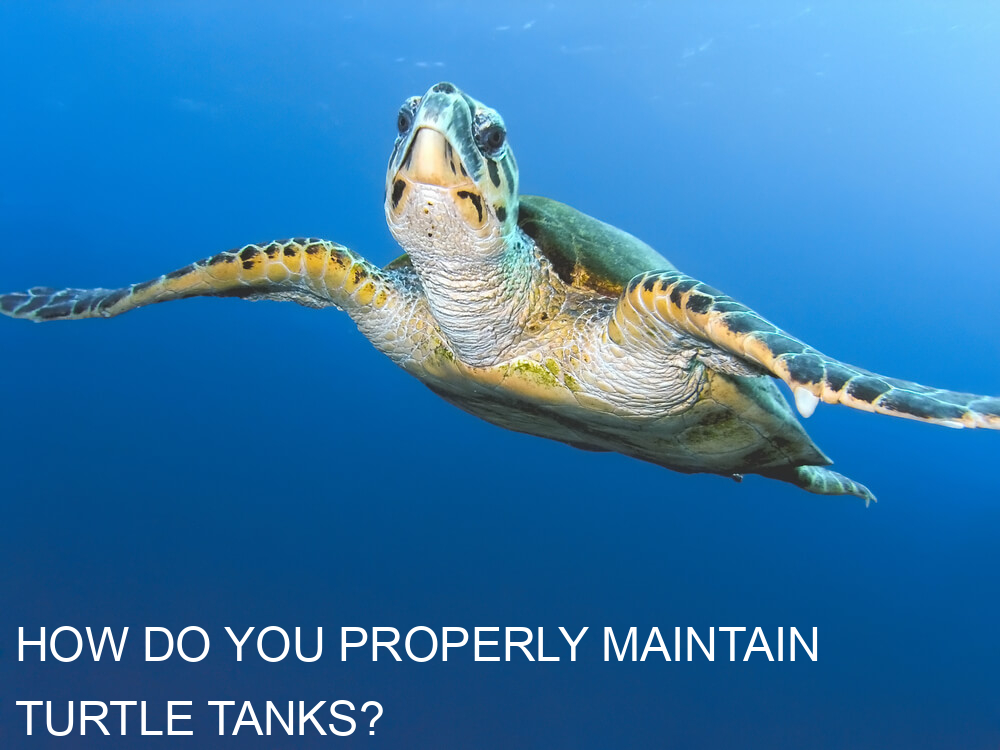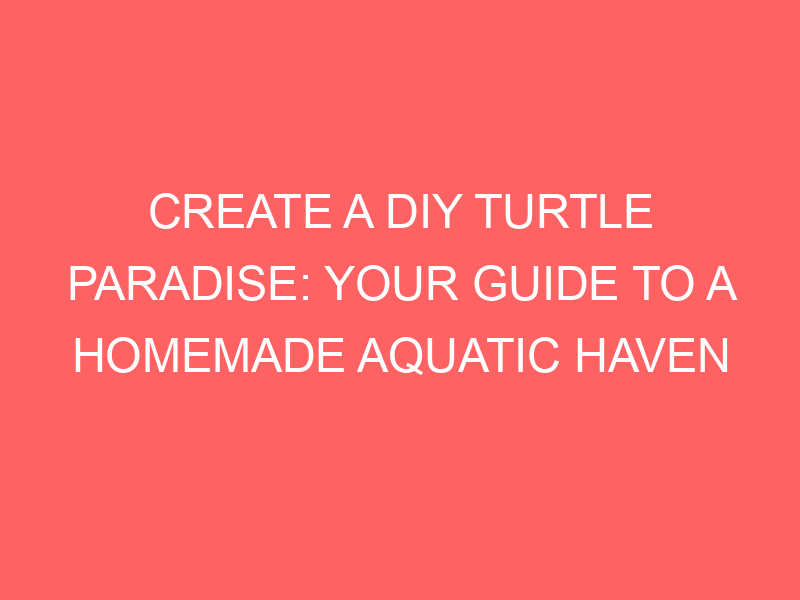If you have a turtle tank at home, you’ve probably noticed how quickly they can grow. Depending on the size of your enclosure, these lovable little creatures can grow from hatchlings to full-grown adults within the span of six months. Keeping your turtle tank properly maintained is an important part of caring for these pets. If you don’t take care of it, things will only get worse over time. Dirty tanks can lead to disease and bacteria buildup very quickly, which can be fatal in some cases. So how do you keep your water clean and maintain good water quality in your turtle tank? Read on to learn more about how you should go about maintaining a turtle tank: What You Need To Know ^^END^^
How do you maintain a turtle tank?
You should maintain your turtle tank on a regular basis. Every couple days, you should clean out your tank and change the water. You can do this by scooping up any excess water or food waste, or by emptying the entire tank and refilling it. Maintaining your tank will help keep diseases and bacteria at bay, which means that you’ll have happier turtles and healthier lagoons over time.
The first step to maintaining your turtle tank is to decide how often you want to do it. If you want to do weekly maintenance, make sure that you clean out the entire tank every week with a 10-10-10 solution of aquarium salt and freshwater prepared in equal parts. Once a week, use this mixture to scrub down the sides of the tank with a squeegee, scrub brush, or toothbrush. You should also take care of the substrate in your turtle tank once every two weeks by scooping up excess food waste and replacing it with fresh bedding material like sand or gravel. You can also use this time to reevaluate what type of substrate would be best for your turtles based on their dietary needs.
If cleaning out your turtle tank bothers you but not enough for it to be daily work, schedule maintenance appointments once every other week where someone else comes over and cleans out the whole container while you watch from safety away from the tanks perimeter.
How often should a turtle tank be cleaned?
How often a turtle tank should be cleaned depends on the size of the tank. Once a week is usually sufficient for smaller tanks, while larger tanks may need to be cleaned more frequently. One way to tell if your tank needs to be cleaned is by checking the water level. If your turtle tank’s water level drops significantly, it’s time to give it a good cleaning!
How do I get turtle poop out of my tank?
First, it’s important to understand what your turtle is looking for in the water. Turtles need a high-quality diet with a lot of protein and calcium. They also like a slightly acidic pH, with a pH around 6.0-7.0. If you want to keep their tank in optimum shape, you need to put some effort into maintaining these conditions in your tank.
There are many ways of keeping your tank clean as well as maintaining good water quality, but all of these methods involve getting rid of the turtle poop that collects on the bottom of the tank. One way to do this is to use an automatic feeder that dispenses food at regular intervals throughout the day. This will help attract small animals from the surrounding area and provide them with food so they don’t have time to leave any poop behind. Another option is to introduce new turtles periodically so that there isn’t just one object for everything to eat up, which can result in excrement piling up quickly and causing problems later on. If you have both turles and new turles, then it’s best to separate them by using wire mesh or leaving some distance between them while they get used to one another before introducing them into the same cage or enclosure.
Something else that can help keep your water clean is adding some plants or decorations into the tank so there are non-predatory animals around who won’t be interested in defecating where other animals
What do turtles need to survive in a tank?
For your turtle to live healthy and happy, they need plenty of room. This means you need a bigger tank than the average one. Most tanks are only 20 gallons, but an adult red-eared slider can easily need 40 gallons or more. The water also needs to be filtered as turtles produce a lot of waste.
The substrate in their tank needs to be deep enough for them to bury themselves into it and feel secure about moving about without fear of getting stuck. You should also provide enough hiding spots for your turtle so that it feels safe and is able to get out from time to time if needed.
Turtles need things like plants, rocks, and wood pieces in their habitats as well as submerged plants that they can use as hiding places or snorkel areas. They also require a basking area where the temperature is between 85-95 degrees Fahrenheit all year round with an ambient temperature around 70 degrees Fahrenheit.
Your turtle will probably require special foods such as insects, fish, frogs, crickets, earthworms, and tubifex worms (to name just a few).














